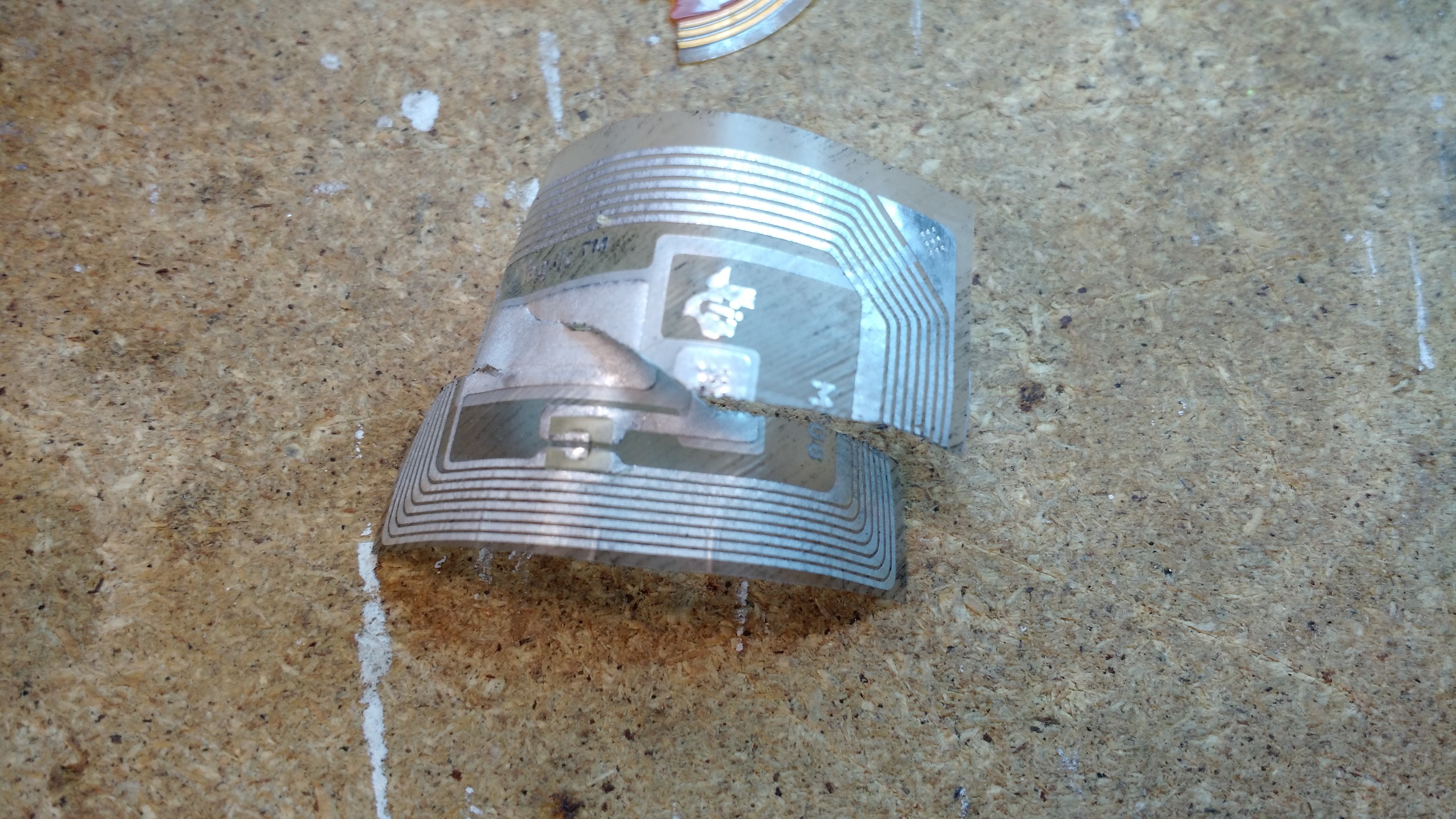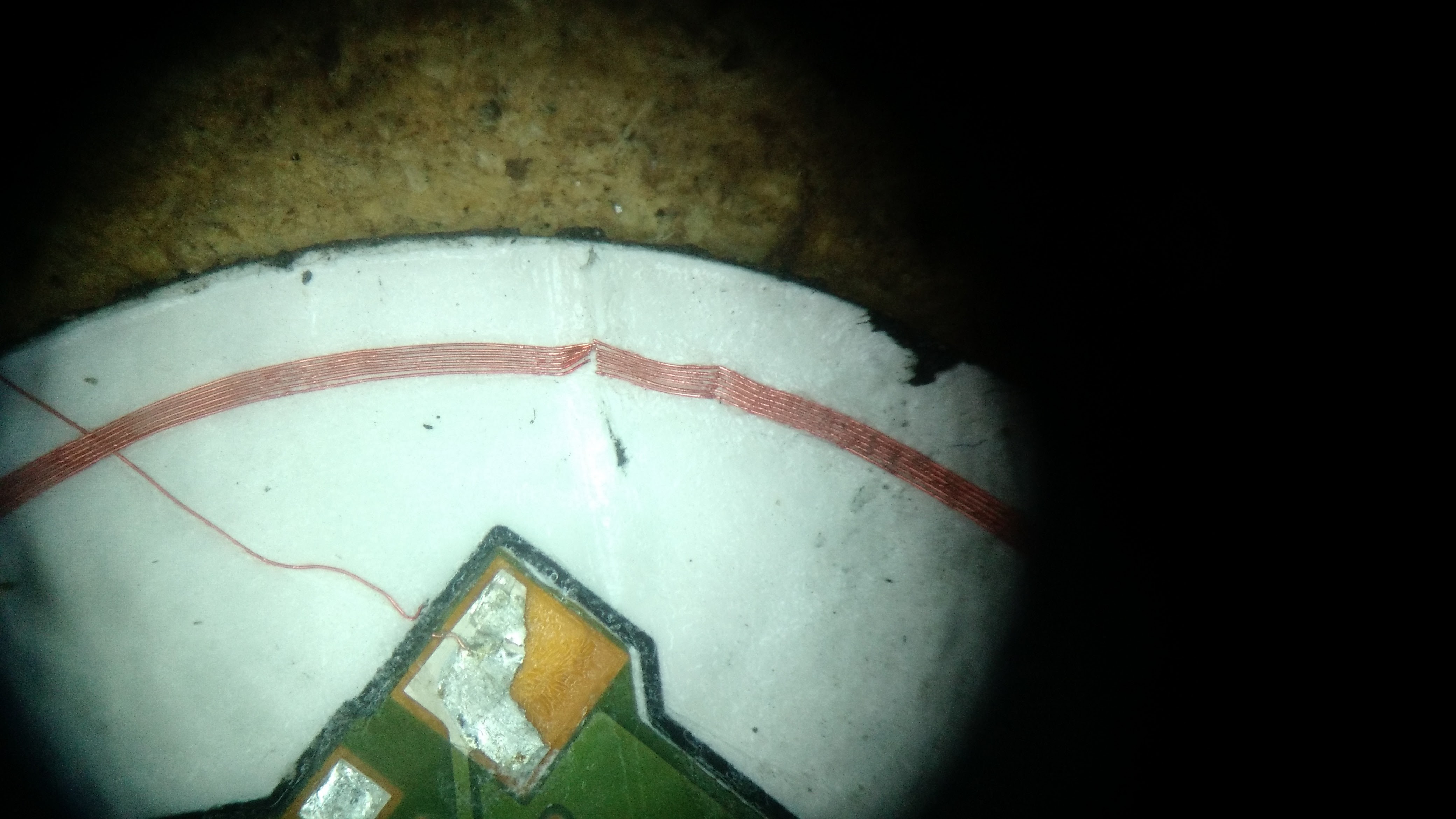April 19, 2016: I have a lot of new updates on this project. Strap in, because this is probably going to be a long one.
First, I got a flat in the tire that had the sensor in it after about 200 miles of riding. The sensor was in my front tire, which generally gets flats less frequently. I suspected the sensor may have caused the flat, but I was pleased to find that a tiny rock had punctured my tire. I probably need a new front tire. I fixed the tube and the sensor was still functional. However, after one ride, the sensor was not working anymore! I soon discovered that it was because the sensor had come loose from the tire because of all the jostling around when the tire was flat. That bent the patch out of shape a bit and it fell loose inside the tube. I pulled the sensor out and it was still fully functional. This is a hard sensor to kill! I have not mounted it back in the tire yet because of the other updates below.
The second thing I tried to do was to mount three different sensors in my tire to test for durability. However (and I believe this is key), I mounted the sensors between the tube and the tire. This means the sensors were constantly being pushed on by ~100 psi, and they were probably also constantly rubbing between the tire and tube. Not one of the three sensors lasted for the ~15 mile test ride. Two of them cracked and one of them had the wire antenna wear completely through (all pictured below). At first I convinced myself that the units that cracked did so because I had put epoxy over the components to protect them from the forces of the tire. I figured the epoxy made it too rigid and gave the sensor an opportunity to crack rather than flex. I tried another of the TI Kapton sensors without epoxy and it cracked as well, so I knew it wasn't the epoxy. The sensor that wore the antenna through gave me a few more clues. In that picture, you can see a faint vertical line that goes right through the failed point on the antenna. That line corresponds to a parting line on the tire tube, that had some extra rubber flash. The flash appears to have worn through the antenna, even though it was protected by a cover layer not present in the picture. This fact and the fact that the successful tag had a very similar Kapton antenna tell me that the real issue here is that the tags are between the tire and the tube, not that the flexible design in general is flawed. More updates below the pictures.



The final update is that I have sent some of the very flexible designs to a few tire manufacturers for test mounting inside tubes. The sensors will have to withstand ~200 C temperatures for the vulcanization process, but if they do, it will answer tons of questions for me. Even if they don't survive, I plan to do some beta testing with these tubes for a few hundred miles and then cut them open to see how the sensor substrate physically fared. However, the tire manufacturers are in China, and none of them have received the sensors yet because I tried to send them via USPS to save money. Seriously, it's $1.20 to send an envelope to China through USPS, but jumps to $60 when you add tracking. Problem is, nobody has received the sensors yet and I have absolutely no idea where they are. They will probably show back up in my mailbox in a month or so as undeliverable for some reason.
So that's where I am. I am just coming off the successful Kickstarter for the BooSTick: https://hackaday.io/project/7050-boostick-small-aa-voltage-booster, so I am starting to look at this one a lot more to figure out how to proceed. I can tell you it is pretty cool to have that sensor in your tire, and I have used it quite a bit more than I would have guessed.
 CaptMcAllister
CaptMcAllister
Discussions
Become a Hackaday.io Member
Create an account to leave a comment. Already have an account? Log In.